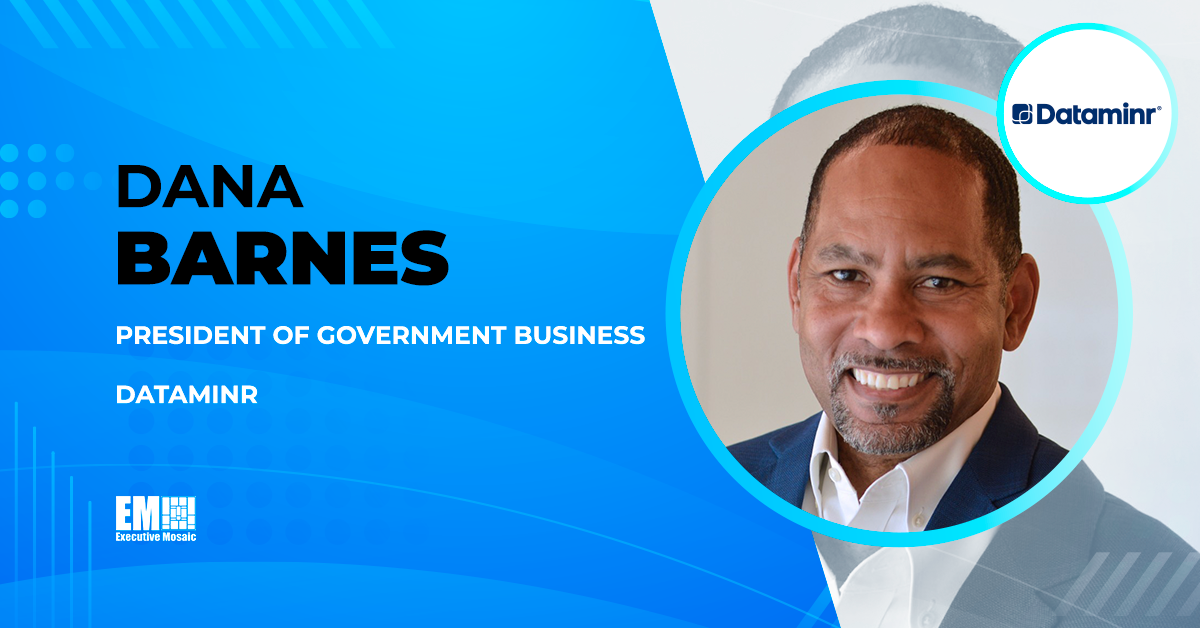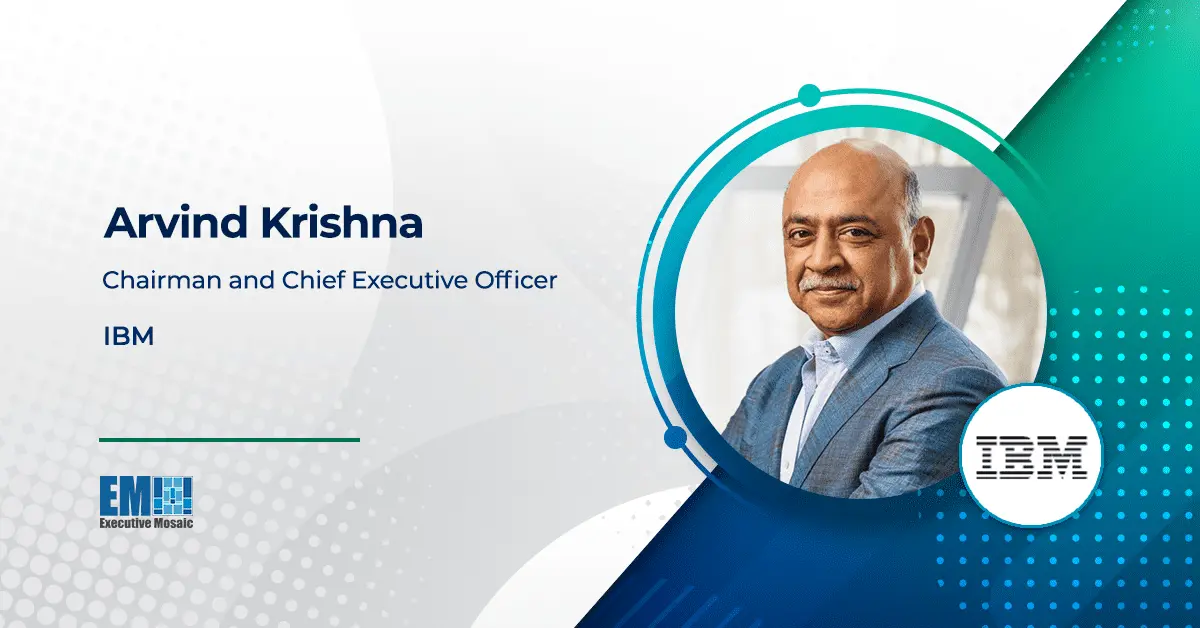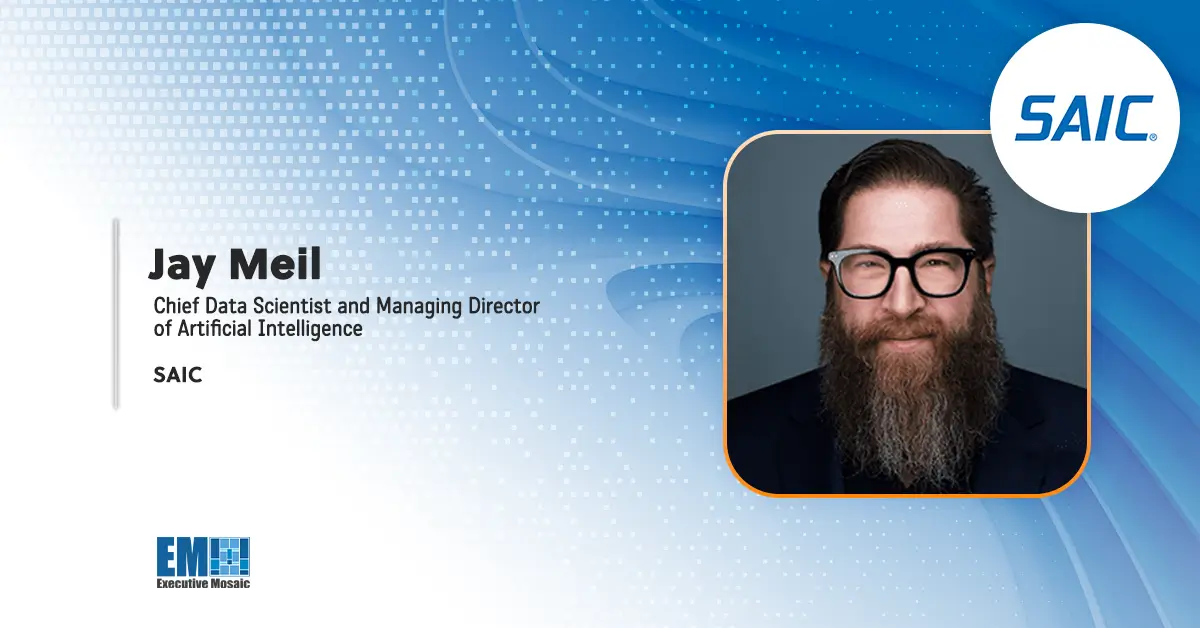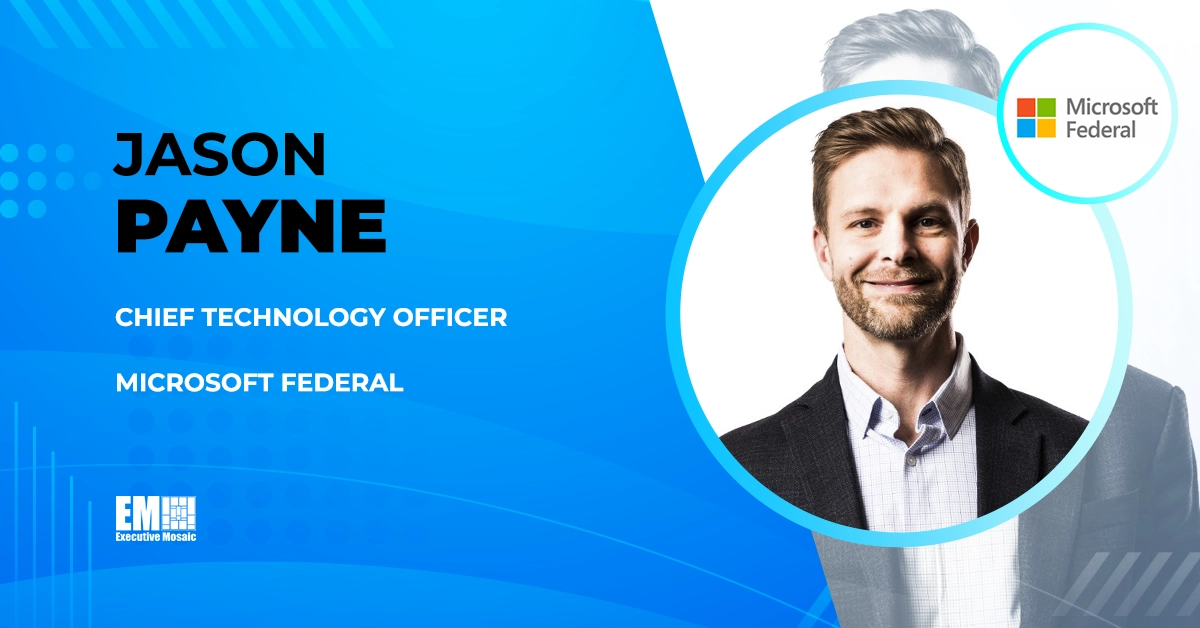International artificial intelligence company Dataminr works to enable faster response and more effective risk and crisis management for organizations spanning corporations, the public sector, non-governmental organizations and newsrooms. The company is reportedly seeing ever-increasing adoption of their real-time event and information discovery platform, First Alert, by federal government and state and local clients.
According to Dana Barnes, president of government business for the company and two-time recipient of the Wash100 Award, Dataminr is also now partnering with universities and has added new capabilities such as configurations with Esri. Barnes is a former U.S. Marine with time spent in leadership roles at Palo Alto Networks and IBM, as well as over a decade at Microsoft.
Barnes recently shared his thoughts with GovCon Wire about the Executive Order on the Responsible Use of AI, where he’d like to see federal legislation on AI go next, company ventures of note and much more.


If you’re a government contractor and want to go deeper on all things AI in the federal space, you must attend Potomac Officers Club’s 5th Annual AI Summit. This lively conference is jam-packed with networking opportunities and many chances to go one-on-one with AI change-makers like the CDAO’s Dr. William Streilein and the CIA’s Lakshmi Raman. Register here for the March 21st event now!
What do you make of the recent Executive Order on the Responsible Use of AI?
The EO is something that we needed as a nation, in terms of a framework and structure on artificial intelligence. If you look at what it does in terms of creating best practices and standards for AI safety and security, it provides a good blueprint for industry on how we should be approaching artificial intelligence and the safeguards we should be putting in place. From my perspective, it was timely and aligned with events happening in Europe, specifically the Bletchley Park AI events held by the UK government and several European governments, led by Rishi Sunak in the UK. The whole world is starting to think about this, so it was good that we had something from the president on how we should be approaching AI. It also establishes some key organizations that I think will be beneficial to us in the future.
What do you think the potential short- and long-term impacts of the EO will be?
Let’s take the long view first. Clearly, it’s all about safety, right? It’s about testing and communication between industry and government around AI. As we’re seeing, AI can be used for many good things, but it can also be abused and used for not-so-good purposes. Long-term, what you’re going to see is increased engagement between industry and government, driven by the executive board. I believe we’ll have a national AI strategy, which is crucial for our nation. Long term, standards, tools and tests will be developed to ensure safety in the use of these technologies across the country.
On the short term side, what you’re going to see is the establishment of the White House’s artificial intelligence policy group overseeing that AI strategy. They’re building that out right now. You’ll see a national AI research task force creating a roadmap for a national research cloud for artificial intelligence, which is incredibly exciting.
What specific impacts do you think the EO will have on the GovCon space and on private-public partnership
In the GovCon space, what you’re going to see is a creation of a space where more organizations can start leveraging AI. There’s been hesitancy in some regards to utilize artificial intelligence in certain parts of government because there’s been no real policy, no structure. Now, this is the beginning of setting that policy and structure. In the GovCon space, I think you’ll see increased adoption of AI technologies at a rapid rate. Some organizations were using the tech before, but now you’re going to see an increased rate of adoption and engagement with industry across various areas.
If you think about what government does and where AI can help, it’s in three areas. First, policymaking — AI can be an incredible tool to help the government with policymaking. Second, service delivery — AI can be an incredible tool for efficient service delivery to citizens. Different AI capabilities can help government agencies be more efficient in delivering services to citizens. That’s key. And the final one is efficient operations overall. If you can improve operations and efficiency, that means you can save tax dollars, providing more innovative services.
How does Dataminr plan to utilize the impact of the EO?
We’ve been implementing many aspects of the EO for years. Safety and security from an AI perspective have been a core part of our company since its founding over 13 years ago. Ensuring responsible use of our technology is crucial. For instance, we don’t allow surveillance with our technology and focus on protecting citizens at every turn when leveraging the tech. In some ways, the EO validates what we’ve been doing for years, which is fantastic. It also enables us to open a greater dialogue with our government partners. The edict emphasizing greater coordination between industry and government will allow us to continue discussions with the government at higher levels, ensuring they understand not just our alerting platform but also our expertise in large language models and data science.
Providing access for these experts to the government and vice versa is crucial, and we believe it will be very beneficial. From our perspective, we’re pleased that there is now structure and policy starting to come into place. We can fold into it and view ourselves as a company that can help the government as it builds out its AI policies and strategy in the coming years.
Where would you like to see federal government legislation on AI go next?
The future is about adoption and clearly defining areas that are core priorities for adoption. Artificial intelligence is often seen as a single entity, but it encompasses various facets that touch many aspects of our lives. Knowing the government’s core priorities, where they want to start, and how they want to leverage the technology would be beneficial. I would love to see them articulate that more clearly. We understand that AI is not a replacement for human beings but rather an enabling tool. Identifying the core areas considered priorities for enablement would allow the industry to focus on those specific areas. Additionally, in terms of policy, especially regarding the rules of the road, they still need to build all of this, and it’s going to take time. The sooner we can see that policy and the rules of the road, the better.
Are there any recent ventures you and Dataminr have been a part of that you would like to highlight?
I recently had an opportunity to participate in an AI summit for diplomacy, focusing on the impact of AI for different ministries of foreign affairs and diplomats coming together. With the advent of artificial intelligence and wider adoption, it’s going to enable various countries and municipalities with smaller budgets and fewer resources, leveling the playing field and creating a more balanced world. I’m excited to see how that unfolds going forward. We have great partnerships with the State Department and ministries of foreign affairs globally, including France, Spain, the UK, Australia and beyond.
Observing how different countries apply AI to diplomacy and global awareness is fascinating, and we’re proud to be a part of it as a company, collaborating with these organizations worldwide. On the NGO front, in the nonprofit sector, those working to bring services and support to the needy or disadvantaged globally are beginning to recognize the power of artificial intelligence. There’s a meaningful crossroads between government and non-government organizations, and we’re actively involved in that space. I’m excited about the future and eager to see developments in both the non-governmental organization sphere and the diplomacy sphere. I’ll be keeping a close eye on that over the coming years and continuing to engage with our customers as they explore leveraging these technologies more and more.









